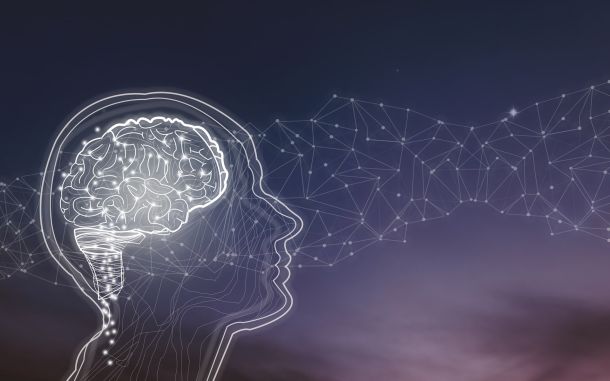The Return of Aether?

In This Article
-
The fundamental building blocks of nature are fluid-like substances, spread throughout the entire universe, and ripple in strange and interesting ways.
-
“Vacuum we've learned doesn't deserve to be called empty. Because it contains a lot of structure, a lot of activity. We can't understand the behavior of the things we do see if we don't ascribe space itself those properties, so space is not a void.”
-
“The Big Bang scenario simply assumes that space, time, and energy already existed. But it tells us nothing about where they came from.”
Electrons and quarks (the building blocks of protons and neutrons) have traditionally been regarded as the fundamental building blocks of matter. But, physicists now tell us that everything is made up of quantum fields, fluid-like substances spread throughout the entire universe. Quantum field theory describes particles as excitations in underlying fields, like ripples in a pond. Five years ago, Professor David Tong, a quantum field theory expert from the University of Cambridge, delivered a remarkable lecture at the Royal Institution in London. He said, “In fact, the very best theories we have in physics don't rely on particles at all. The best theories we have, tell us that the fundamental building blocks of nature are not particles, but something much more nebulous and abstract. The fundamental building blocks of nature are fluid-like substances, which are spread throughout the entire universe. And ripple in strange and interesting ways.”
Tong continued by stating, “So there is spread everywhere throughout this room, something that we call the electron field. It's like a fluid that fills this room, and in fact, fills the entire universe. And the ripples of this electron fluid, the ripples of the waves of this fluid, get tied into little bundles of energy by the rules of quantum mechanics, and those bundles of energy are what we call the particle, the electron… And we're all connected to each other and just like, you know, the waves on the ocean all belong to the same underlying ocean… There are also two Quark fields in this room. And the ripples of these two Quark fields give rise to what we call the up quark and the downclock and the same is true for every other kind of particle in the universe.”
In his book "The Particle at the End of the Universe," Professor Sean Carroll, a well-known theoretical physicist, notes that the Higgs particle arises from a field pervading space, known as the “Higgs field” and everything in the known universe, as it travels through space, moves through the Higgs field. In an interview with Quanta Magazine published last August, Professor David Tong said, “If the Higgs field turned off, the electron would move at the speed of light. So, you know, atoms would not be particularly stable.”
2004 Nobel prize winner Professor Frank Wilczek, considered one of the world’s most eminent theoretical physicists, stated on a PBS program titled “Closer to Truth” that the most basic objects, out of which the universe is constructed, are not particles but quantum fields. And that we can think of them as space-filling aethers. Wilczek went on to say, “So there's something called the electron field, that's what actually appears in our equations… Since there's only one such field, and it has the same properties everywhere and for all time, all the electrons have exactly the same property. They're all the same, rigorously the same, and that's why you can have chemistry. It's not only electrons but also protons, neutrons, different constituents of matter. They all are the same no matter where you find them out in outer space, and so forth. Because the underlying structures are these quantum fields.”
In a lecture delivered at the University of Arizona in 2017, Wilczek discussed the properties of the vacuum. “Vacuum we've learned doesn't deserve to be called empty. Because it contains a lot of structure, a lot of activity. We can't understand the behavior of the things we do see if we don't ascribe space itself those properties, so space is not a void,” he said, awhile noting that the views that there was no aether were not correct and only some of their thoughts about the aether were wrong. As he put it, “It just means it's something different than what people thought before.” Professor Arnold Neumaier, a mathematician, and physicist at the University of Vienna, also comments on this on his website: “In modern language, the aether is called the vacuum, and the properties of the aether are the properties of the vacuum.”
In his interview with Quanta Magazine, Professor David Tong explained that after the Big Bang, there was a time called inflation at which the universe underwent an extremely rapid expansion, and there were quantum fields in the universe when this was happening. He said, “And what I think is really one of the most astonishing stories in all of science is that these quantum fields had fluctuations… And what happened in these first few seconds — seconds is way too long. First few 10^-30 seconds, let’s say, of the Big Bang, the universe expanded very rapidly. And these quantum fields sort of got caught in the act, that they were fluctuating, but then the universe dragged them apart to vast scales.”
Dr. Ethan R. Siegel, a theoretical astrophysicist, wrote an article for Forbes in 2017, in which he said, “As space expanded, these fluctuations would get stretched across the Universe, creating regions with slightly more or slightly less than average energy densities. And finally, when this phase of the Universe — this period of inflation — came to an end, that energy would get converted into matter and radiation…” In a recent article published in Big Think, Siegel said that after the inflation particles and antiparticles of all types, including photons, get created at very high energies and very large densities.
In a March 2022 article published in Big Think titled "The True Meaning of Einstein's Most Famous Equation: E=mc²," Siegel explains the meaning behind this equation. E or energy represents the total energy of the system; m is mass and c², is the speed of light squared. “Einstein was able to derive a law that we still use today, governed by one of the simplest but most powerful equations ever to be written down… E=mc² is a triumph of the power and simplicity of fundamental physics.” Siegel went on to say that mass can be converted (under the right conditions) to pure energy, and energy can be used to make massive objects and continued on to say, “If you take two billiard balls and smash them together, you get two billiard balls out. If you take a photon and an electron and smash them together, you get a photon and an electron out. But if you smash them together with enough energy, you’ll get a photon, an electron, and a new matter-antimatter pair of particles out. A matter particle, such as an electron, proton, neutron, etc., and an antimatter particle, such as a positron, antiproton, antineutron, etc.,”
In a recent article on Big Think (March 2023), Professor Adam Frank, an astrophysicist at the University of Rochester, pointed out that the Big Bang theory fails to explain the origins of energy, matter, space, and time. This is also emphasized on The Center for Astrophysics website, which is a joint effort of the Smithsonian Astrophysical Observatory and Harvard College Observatory. According to their website, “The Big Bang scenario simply assumes that space, time, and energy already existed. But it tells us nothing about where they came from.” Regarding this matter, Professor Sean Carroll also shares his perspective on his website: “Do advances in modern physics and cosmology help us address these underlying questions, of why there is something called the universe at all, and why there are things called “the laws of physics,” and why those laws seem to take the form of quantum mechanics… In a word: no. I don’t see how they could.”
- https://www.youtube.com/watch?v=zNVQfWC_evg&t=250s
- https://www.goodreads.com/book/show/15744013-the-particle-at-the-end-of-the-universe
- https://www.quantamagazine.org/what-is-quantum-field-theory-and-why-is-it-incomplete-20220810/
- https://www.youtube.com/watch?v=58uLU_wbsM8
- https://www.youtube.com/watch?v=TD9PofbrrLc
- https://www.youtube.com/watch?v=X7rxlCxSqw8&t=23s
- https://arnold-neumaier.at/physfaq/topics/aether
- https://www.forbes.com/sites/startswithabang/2017/09/21/the-big-bang-wasnt-the-beginning-after-all/?sh=cce12fa55df6
- https://bigthink.com/starts-with-a-bang/timeline-of-our-universe/
- https://bigthink.com/starts-with-a-bang/meaning-emc2/
- https://bigthink.com/13-8/big-bang-does-not-explain-cosmic-creation/
- https://lweb.cfa.harvard.edu/seuforum/faq.htm#e2
- https://www.preposterousuniverse.com/blog/2012/04/28/a-universe-from-nothing/








